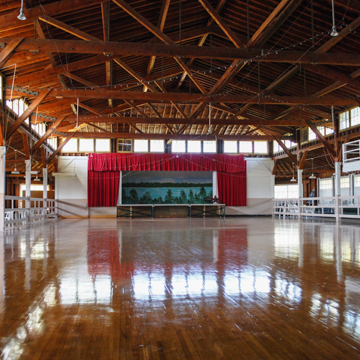Dance pavilions as social gathering places have long been an important part of cultural life in rural areas of the upper Midwest and Great Plains. The Stump Lake Pavilion was built for social, cultural, and recreational activities, and is important for its historical association with political rallies and public gatherings. Stump Lake was the site of ferry boats and commercial pleasure craft as well as the impressive Wamduska Hotel (demolished 1954), which accommodated large hunting and fishing parties. In the 1920s access to Stump Lake Pavilion was possible via the cruise boat Minnetonka, and other pleasure boats that served Stump Lake from the town of Tolna to the south. Similar in design to Red Willow Lake Pavilion (23 miles south, off ND 1), Stump Lake Pavilion is ambitious with its column-free interior of longspan girder construction. Eighty clerestory fixed-pane windows around the pavilion admit natural light onto the dance floor. This clerestory is remarkable in the way it enables the raised longspan roof to essentially “float” above the space. The surrounding veranda, which was popular for roller skating in the 1950s and 1960s, has twenty-eight large windows with tilt-up window covers.
You are here
Stump Lake Pavilion and Regional Park
1922, William Comeau or Lewis “Alex” Wahlquist, builders. Pavilion Rd., Stump Lake Park, 12 miles south of Lakota
If SAH Archipedia has been useful to you, please consider supporting it.
SAH Archipedia tells the story of the United States through its buildings, landscapes, and cities. This freely available resource empowers the public with authoritative knowledge that deepens their understanding and appreciation of the built environment. But the Society of Architectural Historians, which created SAH Archipedia with University of Virginia Press, needs your support to maintain the high-caliber research, writing, photography, cartography, editing, design, and programming that make SAH Archipedia a trusted online resource available to all who value the history of place, heritage tourism, and learning.















